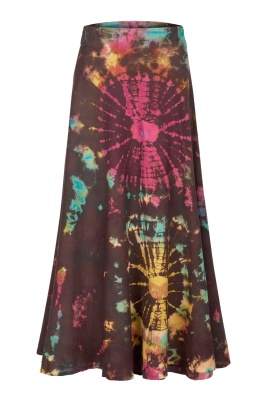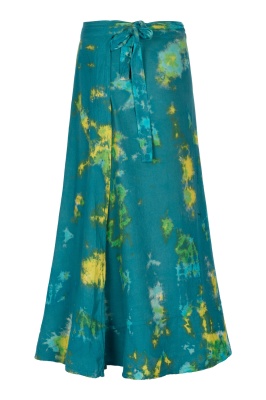About the Pre-Raphaelites – England's Original Hippies
The 1950s, with the arrival of rock 'n' roll fresh from the USA, kicked off a dramatic cultural sea-change. The 1960s changed the world forever, the decade when young people en mass finally rejected their parents' clothing styles and carved out their own unique look in an international act of rebellion. They were the hippies, the flower children, and they have been influencing fashion ever since. But roll back time even farther and you encounter the Pre-Raphaelites, the nation's original hippies, the people who laid the earliest foundations of the hippie movement. Here's their story.
The original hippies - Introducing the Pre Raphaelite Brotherhood
The Pre-Raphaelite movement was a secret society of young English artists and writers, founded in 1840s London to oppose the stuffy Royal Academy’s insistence that the Renaissance master Raphael's work was what every modern painter should aim for. They absolutely detested the era's trend forsentimental Victorian genre painting and its sickly representations of 'real life'. And they objected to the powerful influence of the painter Sir Joshua Reynolds, founder of the Royal Academy of Art and a painter whose work they found far too commonplace and conventional.
Inspired by the critic John Ruskin's theories, the group was all about getting back to nature, painting serious subjects with maximum realism. They started off obsessed with religious themes but soon discovered a wide variety of subjects taken from literature and poetry, focusing particularly closely on love, death and the era's social issues.
William Holman Hunt, John Everett Millais, and Dante Gabriel Rossetti formed the original triumvirate, and once people got over the group's famous eccentricity, their work became extremely popular and influential. The movement died back a little then came back even stronger during the 1860s, thanks to the huge popularity of Rossetti's highly symbolic and detailed paintings. This second wave included artists like John Brett, Arthur Hughes, Gustave Moreau, Evelyn De Morgan, Frederic Sandys, Ford Madox Brown and Aubrey Beardsley.
Changing the face of fashion
The Victorian era saw women suffering decades of cruelly restrictive clothing. The Pre-Raphaelites championed the complete opposite, wearing clothes that flowed thanks to being unconventionally loose. But it wasn't a mere fashion statement. The Pre-Raphaelites used clothing to question women's position in society, which made their fashions both subversive and rebellious.
Take the ordinary working class girl Elizabeth Siddall, who – highly unusually at the time - defined her very own style and ultimately married Dante Gabriel Rossetti. While most of her friends wore the conventional frills and crinolines of the wealthy, Siddall's clothing was made from un-fashionably plain fabrics, cut to simple patterns that echoed women's working clothes. And, scandalously, she absolutely refused to wear a corset.
But it was the textile designer and socialist activist William Morris who most influenced the later Arts and Crafts movement's fashions, inspiring alternative clothes rich in natural decoration, made with natural materials and using traditional skills. These styles led to the movement being renamed the aesthetic movement, and their clothing fast became symbolic of progressive views and women’s rights, hinting at a new, more free lifestyle for females.
The Healthy & Artistic Dress Union came about in 1893, involving the founder of Libertys, Arthur Lasenby Liberty himself. He sold the movement's unusual designs in his madly trendy store at the end of Carnaby Street, promoting them as ‘healthier’ for women than the still-common corsets and tight, restrictive frocks. 'New women' adored the fresh, looser look, and it soon became a style that most women aspired to.
There's a distinct similarity between 1960s hippy clothing and Pre Raphaelite garments: their freedom, the colourful nature of the fabrics, the inspiration taken from nature. And the influence keeps on going. Roll time forwards to 2013, for example, and these long-ago artists and makers were still driving change in the fashion world, and The Independent newspaper tipped the Pre-Raphaelite Brotherhood as the inspiration for 'some of the most exciting and brave new fashion' around. As the article says:
“It's the darker reaches of the Pre-Raphaelites that make the most interesting fodder for fashion, and the most modern. That's why Millais' doomed Ophelia is undoubtedly fashion's Pre-Raphaelite inspiration-board pin-up of choice. “I always loved Ophelia, her movement and elegance. She's an emblem of so many things; love, life, death,” says photographer Paolo Roversi, who worked with Japanese designer Mihara Yasuhiro to create a short film to showcase his spring 2012 collection, Ophelia has a Dream, screened during Paris Fashion Week in October 2011 and again as part of the Tate Britain exhibition.”
Will Pre Raphaelite styling come back into fashion once more, influencing another generation of contemporary design talent? It has actually never really dropped out, as you can see from our gorgeous collection of colourful, comfortable, beautiful and practical hippie clothes. Next time you buy something lush from us, give a nod to Millais, Rosetti, Morris and co. Without them, today's hippie fashion might never have happened.






































